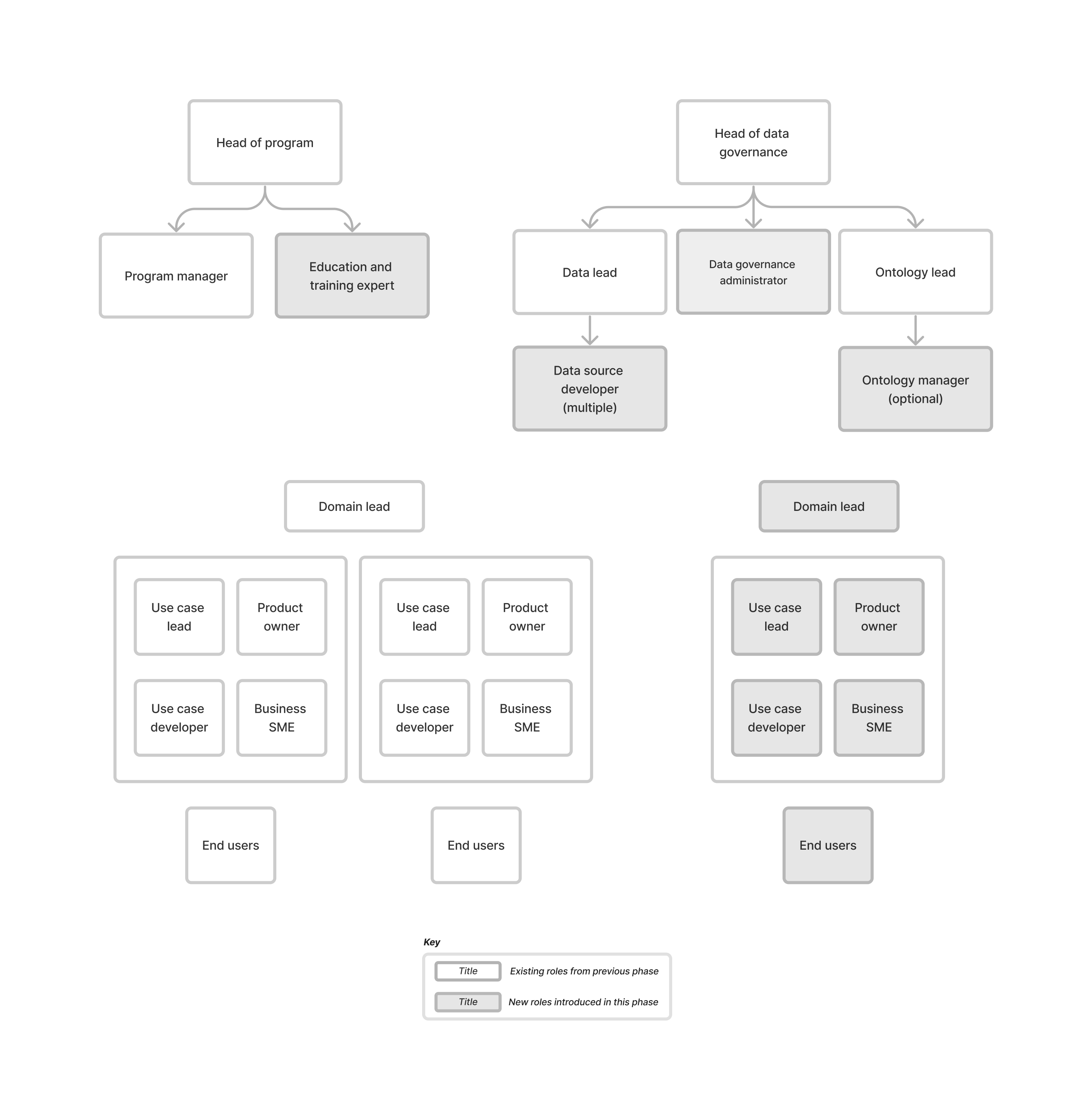Management & enablementFoundry adoptionPhase 2: Develop infrastructure to unlock scalingPhase 2 overview
Phase 2: Develop infrastructure to unlock scaling
What does the organization’s use of Foundry look like?
- Several use cases are in production and used in the organization, and/or multiple use cases are under development by use case teams.
- The goals of the Foundry Program are focused on enabling rapid scaling, implementation across business domains, and formal prioritization mechanisms.
- There is an intention, or a formal roadmap, driving the expansion of Foundry within the organization through new and existing use cases.
- The number of Foundry users and developers has grown to a point where centralized management of development initiatives is required to maintain organization and scalable growth.
What does the Foundry Program team look like?
- During Phase 2, we recommend building out formal Program team infrastructure and governance.
- The goal of the Program team is to accelerate growth and resourcing, develop Foundry expertise, and create core IT infrastructure while ensuring alignment across the Program team and wider business stakeholders. This phase will set the foundation for a larger program in the future.
How do we focus our resourcing efforts?
- In this phase, formalize program management roles with three main focus areas. Appointed resources should ideally grow into roles with a wider scope as the program develops. Focus areas include:
- Outbound communication: Ensure awareness and adoption of Foundry across business domains.
- Inbound communication: Manage inbound development requests and create approval criteria and prioritization mechanisms for new use cases.
- Program governance development and MVP implementation: Review best practices and suggestions in the governance processes documentation.
- Invest in individuals to build an organizational ontology and develop a team of Ontology Managers. These resources should be skilled in gathering requirements, understanding data availability, and contributing to ontological design.
- Focus on data ingestion, managed directly by use case teams, or through a centralized team of dedicated data source developers. The scope of work should include the building of robust and regular health checks and scheduled builds, along with standardized metadata.
- Start IT infrastructure build-out with data security, such as permissions and access controls across the Foundry data store. This will enable Foundry to scale rapidly to new users and/or environments without the concern of sensitive data access.
Roles diagram
The following diagram shows the various roles and teams within the Foundry Program team that are responsible for Foundry implementation in Phase 2:

Learn more about Program team roles and responsibilities in Phase 2.